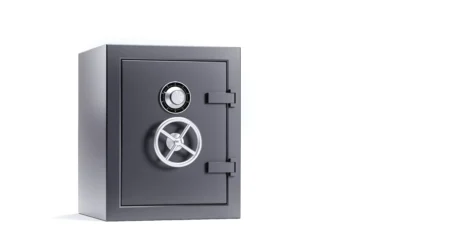What is hard money lending?
Introduction
In the realm of real estate investing, it is common to encounter financing options that suit different investors’ needs and preferences. One of these is hard money lending, which has recently gained popularity among property investors. Hard money lending is an avenue where an investor borrows funds from a lender, mostly a private company, to purchase or renovate an investment property. This article aims to provide a comprehensive guide to the concept, terms, and benefits of hard money lending, in addition to the risks and alternatives investors need to weigh.
What is Hard Money Lending?
Hard money lending is a type of financing that involves the use of funds obtained from a private lender or investor instead of a traditional bank. Typically, the terms of hard money loans are short, usually between 6 to 36 months, and the interest rates are higher than the rates of bank loans. Hard money loans have their origins in the late 1950s and were initially biased towards the gambling industry. Since then, the concept has proliferated and evolved to revolutionize the real estate market. It is now a major financing option for property investors.
How Does Hard Money Lending Work?
Hard money lending works by investors securing a loan using the collateral of their existing investment property. Traditional lending institutions do not offer loans secured by collateral that is not the purchaser’s primary residence. Hard money loans, on the other hand, are collateral-based, meaning that the lender does not pay attention to the borrower’s credit score or income level. Instead, the lender considers the property’s value that the borrower is seeking to purchase or refurbish. If the value of the property is satisfactory, the lender then approves the loan application.
For example, suppose an investor sees an investment property worth $200,000 but has a poor credit score and struggles to secure a loan from a traditional bank. In that case, they could consider hard money lending. The investor applies for a hard money loan with a lender, giving details of the property they want to buy as security. If the property is in a good location and has adequate security, the lender may approve the loan and offer the funds needed to complete the purchase. Once the loan is approved, the investor can buy the investment property and start renovating it. After the renovation is complete, the investor can sell or refinance the property to repay the hard money loan.
Terms of Hard Money Lending
Interest Rates and Fees
Generally, the interest rates for hard money loans range from 10% to 12%. However, the interest rates may vary based on several individual factors, such as the borrower’s experience and the location of the property being financed. Additionally, hard money loans attract higher fees than traditional bank loans. To secure the loan, the borrower incurs fees that may cost between 2% and 5% of the loan amount approved. These fees comprise origination fees, underwriting fees, title insurance fees, and application fees.
Duration of Loans
The repayment term for hard money loans usually ranges from six months to two years, although terms as long as five years are not unheard of. In some cases, repayment can be delayed, but at the cost of being charged a penalty for late payments.
Loan-to-Value Ratio
The loan-to-value (LTV) ratio determines the maximum amount of money a lender can lend against the value of a property. Typically, hard money lenders offer LTV ratios ranging from 60% to 70% of the property’s value.
Benefits of Hard Money Lending
Flexible Approval Criteria
Hard money lending provides a more flexible approval criterion than traditional lending institutions. The latter rely on a borrower’s credit score and income level to approve loans. In contrast, hard money lenders consider the value of the investment property they are financing while ignoring the borrower’s credit rating or income status. This makes it an excellent option for investors who need quick financing and cannot access loans from traditional lending institutions.
Speed
In most cases, hard money loans can be approved within a few days of application. This is a quick turnaround time compared to traditional bank loans, which may take up to six weeks or more for approval. This speed can be useful when an investor needs to act fast to secure a property.
Flexibility
Hard money lending is highly flexible. Unlike banks, which impose stringent restrictions, hard money lenders offer more flexibility. An investor can approach a hard money lender and negotiate loan terms that suit their unique investment needs.
Drawbacks of Hard Money
High-Interest Rates
Hard money lending attracts high-interest rates ranging from 10% to 12% as it involves more risk for lenders. Traditional bank loans offer lower interest rates, generally ranging from 3.5% to 5% for investment properties.
Short Repayment Period
Hard money loans have a shorter repayment period, usually between 6 to 36 months. This can be a disadvantage as investors have less time to repay the loan amount, making it challenging to manage the payments they need to make. Additionally, if an investor has not completed the property’s renovation and pursued other revenue streams by the loan’s end, they may have to secure another loan to pay off the hard money lender.
An Alternative to Hard Money Lending
Private Money Lending
Private money lending is another financing option similar to hard money lending. The fundamental difference between the two is that private money lenders are individuals instead of companies. Typically, these lenders are experienced investors who vet investment opportunities and offer financing to other investors. They raise funds by leveraging their investment experience and personal capital to provide needed capital to other investors. Private lending investors usually offer better loan terms and lower interest rates than hard money lending.
Conclusion
Understanding hard money lending is paramount, especially for investors who want to diversify their financing options. Some of the key takeaways from this guide include the concept of hard money lending, how it works, its terms, and its benefits and drawbacks. The article also highlights an alternative financing option, private money lending. With this information, investors can make informed decisions on the best financing approach that suits their investment needs.












Leave a Reply